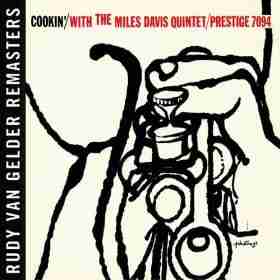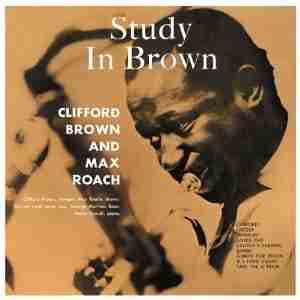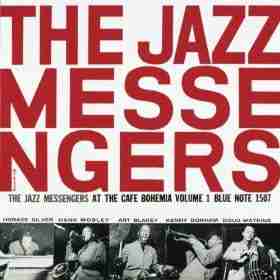On this site we’ve frequently written about learning tunes. This is no coincidence – learning tunes goes hand in hand with improving as an improviser. Whether you’re practicing, performing, or simply listening to a few records with some friends you’re dealing directly with tunes. Keeping this in mind, building a solid repertoire of tunes should be near the top of your practice list as a serious musician.
If you haven’t done so already, be sure to check out some of the these articles to help you get started with building your repertoire:
- A Blueprint for Building your Repertoire
- 10 Key Tunes
- 5 Tunes you should know and why
- Do you know that tune?
- How to learn a tune in 30 minutes
- Thoughts on learning tunes
- 5 Secrets to learning tunes
These articles are a good place to begin when you want to start building a solid base of tunes that you’ll feel confident performing, but what’s your next step?
If you’ve learned a handful of tunes and have a solid grasp of chord progressions, the answer is simple – you just need to learn more tunes.
However, this simple solution isn’t as easy as it sounds. As soon as you get into the practice room things begin to look a little different. The prospect of picking out one tune to learn from the hundreds upon hundreds of standards out there can be an overwhelming and even depressing process.
Where do I even begin? Why choose one tune and not another? How did I get so far behind? Before you know it the entire process quickly becomes a giant chore with no end in sight.
But it shouldn’t have be like this, music is supposed to be fun, right?
Putting everything into perspective
When you set out to expand your repertoire it’s very easy to get overwhelmed by the sheer amount of tunes out there.
To get past this initial obstacle you need to put a few things into perspective. The first thing to keep in mind is that learning tunes is a lifelong process. As long as you’re playing your instrument, whether it’s 5 years from now or 50 years from now, you’re going to be working on learning tunes. No matter how many hours you spend diligently practicing, there will always be a tune that you don’t know…and that’s OK.
As you tackle tunes in your daily practice remember that there’s no rush to the finish line or award for knowing the most tunes, you just want to steadily progress each day over the long haul – one brick at a time.
One simple change that you can make today is consciously altering your approach to learning tunes.
The big problem that many of us run into in expanding our repertoire is that we’ve made learning tunes a utilitarian process rather than an artistic process. Instead of focusing on the sound and unique character of each tune, we’ve turned those notes and melodies from the record into ink dots on the page of a fake book.
When a standard becomes a random set of chords or another group of notes to memorize all tunes become the same. Even worse, the entire learning process becomes tedious and boring. This is the downfall with learning a tune from a piece of paper, you’re not hearing the sound, inflection, or time of the melody and chord progression.
As a result you have no emotional connection to the tune in question, you might as well be memorizing your grocery shopping list or your bank statement.
However, the good news is that you can reverse this ineffective process. A slight change in your daily practice can make learning standards fun and inspiring again. Here are four ideas for adding tunes to your repertoire in a more productive and enjoyable way.
I) Learning tunes by musician
Take a moment and think of your favorite musicians that come to mind from the beginnings of this music up to today.
Louis Armstrong, Lester Young, Art Tatum, Bird, Miles, Freddie Hubbard, Stan Getz, Trane, Herbie Hancock, Sonny Rollins, Tommy Flanagan, McCoy Tyner, Michael Brecker and so on and so forth…
What exactly is it that makes these players great? Why do you keep listening to them?
We often think of our favorite players as masters of improvisation, however it’s their personal style and interpretation of melody that is just as notable as their mastery of improvisation. Over the years hundreds of players have recorded the same standards, but when you think about it we don’t listen to every player, we choose to listen to a certain few.
The truth is that it’s not just the tunes that matter when it comes to repertoire, it’s the interpretation – and this is the key to learning tunes effectively.
A unique sound, a personal sense of time, the way a melody is phrased. These are the details that stick in our minds and our ears after we listen to a tune, not a specific scale or harmonic alteration. Each of those great players listed above has left their own unique mark on the great American songbook. Once they played a tune it was changed forever, it became their tune.
The list of tunes that you learn shouldn’t be created from as an arbitrary list, it should be created from the players that you’re always listening to, the albums that get you excited and motivated to practice, and the melodies and progressions that grab your ear. The goal of transcribing an improviser’s style and the goal of learning tunes doesn’t have to be separated into different areas of your practice. In fact, learning a tune by ear is transcribing.
If you’re having trouble picking out tunes to learn or find it difficult to expand your repertoire try something different – learn these tunes through the perspective of your musical heroes. Before you write out a long to-do list of tunes that’s probably going to gather dust, pick out a player that you’ve been meaning to get into and learn their “songbook.” Here are a few players you might get started with:
Clifford Brown tunes
Cherokee
Sandu
Joy Spring
Stompin’ at the Savoy
Jordu
Charlie Parker tunes
Ornithology
Moose the Mooch
Yardbird Suite
Billie’s Bounce
Confirmation
Groovin’ High
Miles Davis tunes
Four
Oleo
In Your Own Sweet Way
If I Were a Bell
Stella by Starlight
Half Nelson
Walkin
John Coltrane tunes
I Love You
I Hear a Rhapsody
Like Someone in Love
My Shining Hour
Come Rain or Come Shine
Chet Baker tunes
All the things you are
There will never be another you
Darn that Dream
My Funny Valentine
But Not for Me
When you connect the tunes you’re trying to learn with the players that you love, you’re not just learning the melody and chord progression to a tune, you are studying a player’s style and learning their musical language.
II) Learning tunes by composer
When I was in school we periodically had days where every combo in the school would gather to play the music of a specific composer. Each group would chose a tune from this composer and as a whole we would explore the songbook of this particular composer. This is a great idea to incorporate in to your personal practice routine. Find a composer that you’re interested in or a composer whose tunes grab your ear and learn each of their tunes. Here’s a few examples:
Tadd Dameron
Hot House
Move
Our Delight
On a Misty Night
Lady Bird
Benny Golson
Stablemates
I Remember Clifford
Along Came Betty
Whisper Not
Jerome Kern
All the Things You Are
Dearly Beloved
The Song Is You
Smoke Gets In Your Eyes
The Way You Look Tonight
Yesterdays
Pick any composer that you like or a composer that you’ve been meaning to get into: Thelonious Monk , Wayne Shorter, Charles Mingus, Ellington, Kenny Dorham… Spending time focusing on any of these composers is a great way to expand your repertoire.
III) Learning tunes by album
If you’ve ever read any interviews or biographies of the great improvisers this music has produced you’ve probably noticed a trend.
Each of these stories usually starts the same way: a precocious youngster is naturally drawn to the music, finds a record, wears it out through constant listening, learns every tune and solo on the record, and the rest is history. To these icons, a record of one of their heroes was like a treasure. Once they had it in their hands they learned every tune, every solo, and every arrangement. This one album became pivotal in their development and conception of improvising.
The advantage that we have today over the past generations of improvisers is that we have access to any recording we want at the tip of our fingers. However the irony is that this is also our disadvantage – we have too much information, but not enough knowledge. Another way you can improve the process of learning tunes is by following the example of your musical heroes and picking out one record and spending hours with it until you’ve ingrained every detail.
This task doesn’t require any research or extra searching on your part, simply find some records that you can’t stop listening to, the ones where you sing along with every solo, and get to work on learning those tunes. Here are a few albums to get started with:
Cookin’ with the Miles Davis Quintet
The Jazz Messengers at the Cafe Bohemia
Once you find your record, pretend that you’re stranded on a desert island and this is the only record you have. Listen to every track on repeat until you can sing along with each melody and solo. Then take it into the practice room and start by transcribing the melodies on your instrument. Then move onto learning each of the solos.
After a short amount of time getting intimate with this record, you’ll gain much more musically than a few tunes tunes to add to your set list. You’ll learn about the history of this music, you’ll be able to sing and play the solos of the great improvisers, and most importantly you’ll have this information ingrained in your ear forever.
IV) Learning tunes that grab your ear
As musicians we’re listening to music all the time. In the space of a week the odds are pretty good that you’re going to hear a few tunes that you don’t know. It might be a melody that you’ve heard dozens of times before but never actually learned on your instrument or it might be a tune that you’ve never heard before, but for some reason it immediately grabs your ear.
There are dozens of places that you’ll encounter tunes like this: When you go to a show and hear a standard that blows you away, when you’re at a jam session and a tune is called that you don’t know, when you’re hanging out with a group of friends and they start talking about a tune or records, or even on the speakers when you walk into a restaurant.
As you encounter a tune that you don’t know make a mental note of it. Write it down, find a recording, and scour the internet for recordings and performances of that tune. Get this tune in your ears, listen to it on repeat to the point that you start singing the melody everywhere you go.
When I hear a tune that catches my ear or a tune that I want to learn I go to YouTube and download the best version of the tune I can find. Then later, when I’m in the practice room I’ll bring that file back up and learn the melody.
By following these steps, you’ll eventually have a list of tunes that you’ve gathered simply by paying attention to your day to day listening. A list of tunes that you’ve created from your own experience, rather than a random list that you’ve compiled like an unwanted homework assignment.
Making tunes personal
Any method that you choose to learn tunes whether it’s picking the tunes of your favorite player, your favorite albums, or simply making a list of tunes that catch your ear will give you an important advantage over making a random list.
The standards that we learn should mean something. If you truly want to connect with your listeners you need to begin by connecting with yourself. Learning tunes shouldn’t be a process of “jazz homework” where you force melodies and chord progressions into your mind, it should originate from a feeling of excitement and inspiration.
Anyone can make a long list of tunes that you’re supposed to know, but how excited are you to memorize that information? We are much more motivated to do something when we have a personal connection or stake in it – when you do it your way.
With the four methods above, you’re learning a tune because it’s connected to something important to you.
Now you have a reason to learn the tunes on your list and in the long run you’ll find that you’ll learn many more tunes this way. The practice of learning tunes will suddenly become enjoyable and something you look forward to, rather than this anxiety and guilt ridden chore that you force yourself to do from time to time.
You don’t have to feel obligated to use all of the above steps to see improvement, just pick one and the shift in your approach will happen immediately.













